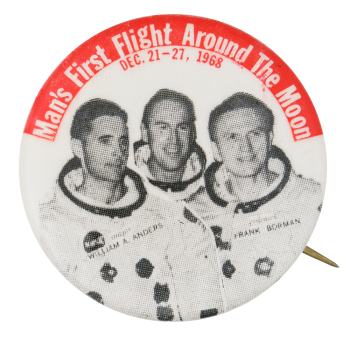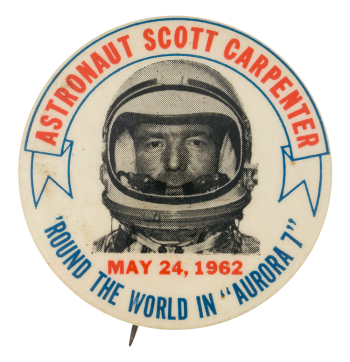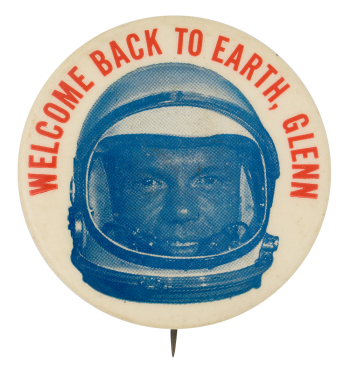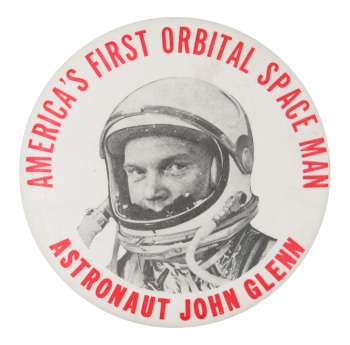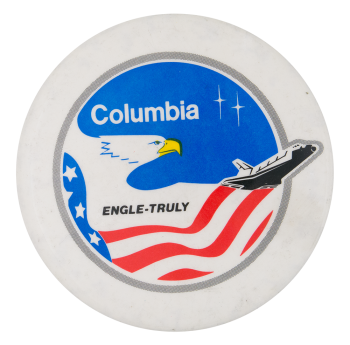Astronaut John H. Glenn Jr.
| Category | |
|---|---|
| Additional Images | |
| Sub Categories | |
| Text on Button | 1st AMERICAN ASTRONAUT IN ORBIT JOHN H. GLENN, JR. |
| Image Description | Black and white photograph of a man's head and shoulders in a space suit surrounded by a ring of red with white text, a thin white ring and an outer blue ring. |
| Back Style | |
| The Shape | |
| The Size | |
| Year / Decade Made | |
| Additional Information | John H. Glenn Jr. was born in 1921 in Cambridge, Ohio. John Glenn served during World War II in the Navy and Marines and in the Air Force and Marines during the Korean War. In 1962, Glenn became the first person to orbit the Earth in the Mercury-Atlas 6 spacecraft, commonly known by it's nickname, "Friendship 7". In 1998, he returned to space aboard the STS-95 Discovery, while conducting experiments on the aging process. In 1974, he was elected as a senator from Ohio, a position he retained until his retirement in 1998. |
| Catalog ID | EV0119 |



